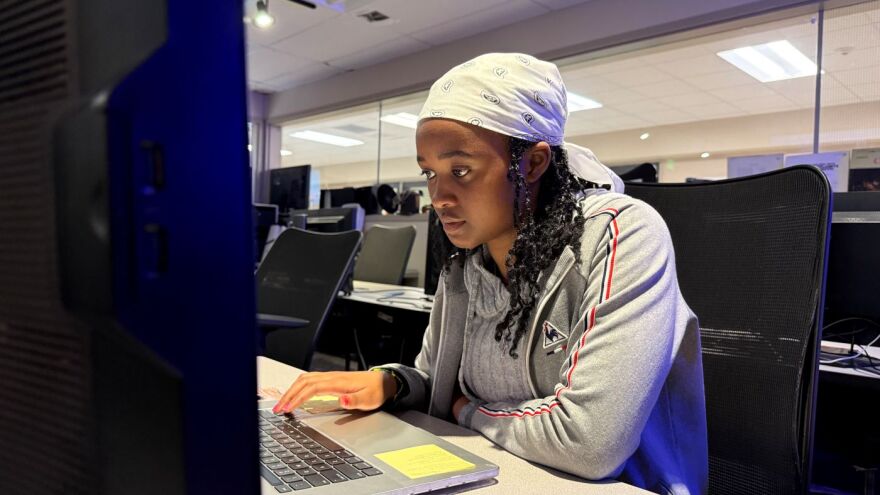Laughter joyfully filled a dinner table at the Townhouse in Sioux City, where the focus was on the food.

“Kuku and chips. Chips and kuku, our favorite meal,” said a few around the table.
That’s Swahili for chicken and fries.
Seated together were Sadhia Abdallah, Doreen Mshana and Wilson Tarimo — natives of Tanzania. They also enjoyed the company of Kevin Negaard and his wife, Gail — long-time Iowans.
What brought them all together for an unlikely friendship started with a tragic story.
Abdallah, Mshana and Tarimo were too injured to remember that first meeting, thousands of miles away in Tanzania in 2017.
At the time, Kevin Negaard was the executive director at Sunnybrook Community Church in Sioux City. He was on his first mission trip with the nonprofit Siouxland Tanzania Educational Medical Ministries.

On the way to a wildlife safari with two other medical missionaries, they witnessed the aftermath of a deadly school bus crash.
“[It] came off the road and went down about a 40-foot ravine, and then just hit head on. And so, most of the kids broke their necks and were killed instantly,” Negaard recalled.
Thirty-five died at the scene. Only Abdallah, Mshana and Tarimo survived.

All three suffered broken bones and other injuries. Negaard didn’t think Abdallah would make it because of severe head trauma. The impact paralyzed Mshana and ripped her jaw apart. Today, only a small scar remains.
“It was like life and death moments, you know,” Mshana said. "Sometimes I just like to look back to remind myself how far I've been."
Negaard worried about what would happen if they stayed in Tanzania.
“In that country, over 50% of the people with an open fracture get that limb amputated,” he said. “So, we just knew that there's no hope if they stay here, and that really began the quest of trying to get them out of the country.”
Mercy Hospital in Sioux City offered free care, and after some diplomatic maneuvers, the children flew to Sioux City several days later for treatment. There, they endured several surgeries.
Mshana feared the damage was permanent.
“At first they thought I'll be paralyzed, you know, for life,’” Mshana said. “But miracles happen, and I just woke up one day and I could move all my feet, I could sit upright, I could move my hands and everything. And everyone was very happy.”
After months of recovery, they went home. But not forever.
Western Iowa Tech Community College offered them free tuition. Starting in the fall of 2022, Mshana studied video production, Abdallah picked accounting and Tarimo chose business.

Tarimo said he feels gratitude for the support of the whole community, including from doctors, teachers and people at his church.
“Sometimes I feel like I kind of don't deserve it, how people are treating us so well here,” Wilson said.

They experienced a few challenges. Starting college, they didn’t know how to use a computer and struggled a bit to keep up with a new, fast-paced culture. Back home, they said people tend to just "go with the flow."
For Abdallah, winter weather was another thing to get used to.
“It was beautiful. I love the snow, but I don't like the cold,” she said.
After graduation, they plan to finish their bachelor’s degrees in Sioux City, then a one-year internship, before returning to Tanzania, where Abdallah hopes to use her success to encourage others.
“I really want to help people a lot,” she said. “I think God may have made me, like to survive, just to help other people who are very needy. And that's what I'm going to do, that's my plan.”


Negaard still meets up weekly with the students he saved. He often reflects on how far they have all come.
"I know how special they are, with what they've gone through and [I] just want them to make the most of every opportunity they have so they can go back and make a difference in their country. Because they know the responsibility they have for their classmates who died,” Negaard said. “It doesn't matter how much we tell the story, unless you were there, you can't imagine the trauma that they had and the injuries that they had. And to be here today, with very little long-term impact, is just — it is the most amazing thing.”
The tragic accident eight years ago sent the students from Tanzania on a path through Iowa with unexpected bonds and lessons of resilience and hope.
The students also pointed to a higher power.
“We were just normal kids back at school, then we survived and are now the 'Miracle Kids.' We have really witnessed the work and miracle of God,” Abdallah said.






